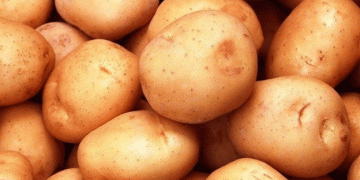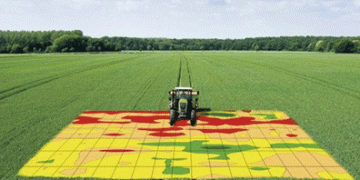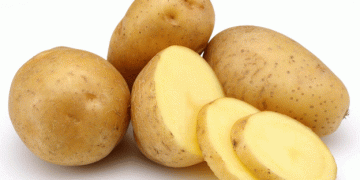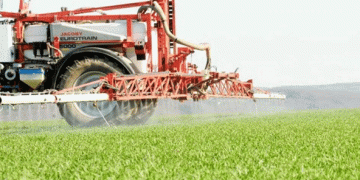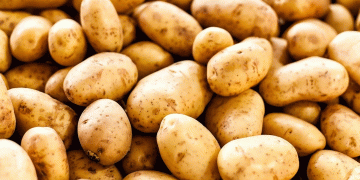Preserving the potato and maintaining its quality, reducing or even avoiding possible damage, has become a challenge for equipment manufacturers specialized in this task.
The mechanized harvesting of potatoes shows a constant technological evolution.
The high global demand for potatoes requires maintaining production levels that are only achievable in a mechanized way. Its volumes are far from those of the most representative cereals, such as rice, wheat or maize, and perhaps curiously the large groups in the agricultural machinery sector have so far paid no attention, for the benefit of medium- and small-sized manufacturers, who over time have improved their specialization and the techniques used. Probably because of this circumstance, there is no unified technique, eer for cultivation, nor for harvesting.
In the market you can find very different alternatives in the collection process. From very simple solutions such as hoeing or ‘patatero’ plows to dragged or self-propelled harvesters that can work in multiple rows and complete the entire process, including cleaning and exact placement. The choice is based on the area cultivated, the time available, the type of land, the labor and the destination of the product.
Whatever the choice, avoiding damage and keeping the potato with the highest quality is a priority, taking into account its mechanical resistance, which varies depending on the temperature, the state of maturity, the degree of humidity and, of course, the variety. One aspect to consider is the risk of tuber damage to sieving chains and separation organs, especially in varieties for fresh consumption.
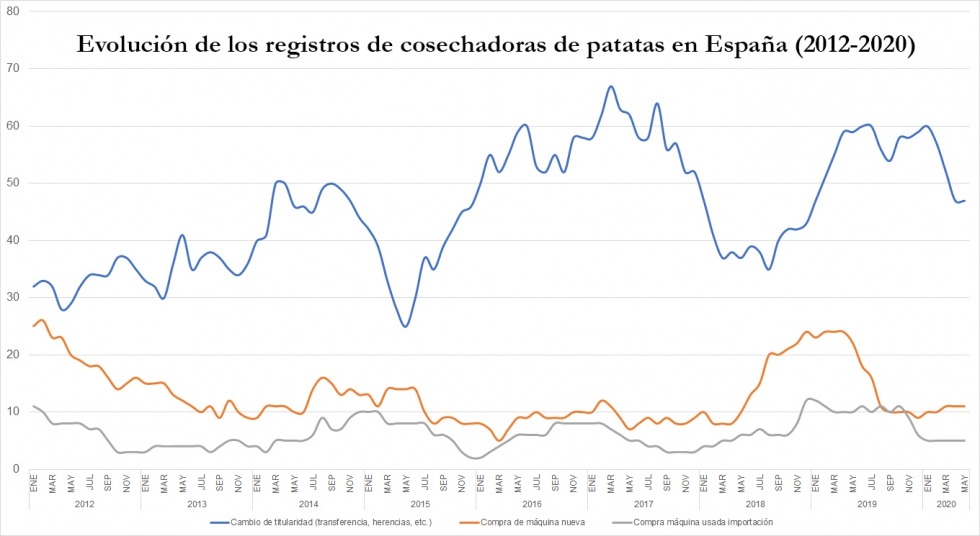
The collection machinery usually moves in horses, after the action of the planters. The insufficient labor and rising costs it carries has led to the rise of equipment with an increasing degree of technicality and the complete machining of the process, which require very few operators, although its work is complemented by that of auxiliary operators on a selection table.
The start is usually done with a curved leading edge fence, assisted by two circular side blades, which help cut the roots, and a top support roller (‘diabolo’) which forces the entire mackerel into the machine.
Cleaning begins on a chain conveyor with inclined cross rods with respect to the horizontal, which receives the material from the starter grid; the angle of inclination and the jolts that occur on the conveyor causes the potatoes to separate from the ground; by linking successive conveyors you can achieve the separation of stones and lumps. The stems and roots that accompany the tubers can also be separated.
The cleaning process is completed, in the most complex machines, using rubber sieves with highlights, nylon brushes and size separators, which is attached to a complementary manual separation table, or electronic image separation systems. Hoppers or packing systems are used for potato storage. There are also large machines designed to unload on a trailer that travels in parallel.
| Buying a new machine | Change of ownership (transfer, inheritances, etc.) | Buy used import machine | |
| Andalusia | 0-1-0-2-1-0 | 4-3-2-3-3-1 | 0-0-0-0-0-0 |
| Aragon | 0-1-0-1-0-0 | 0-0-1-1-2-0 | 0-1-0-1-0-0 |
| Balearic | 1-2-2-4-0-0 | 1-3-1-2-2-1 | 0-0-0-0-0-0 |
| Canary islands | 0-0-0-1-0-1 | 0-0-0-0-0-0 | 0-0-0-0-0-0 |
| Cantabria | 0-0-0-0-0-0 | 0-0-0-0-1-1 | 0-0-0-0-0-0 |
| Castilla-La Mancha | 1-0-1-2-1-0 | 1-2-3-4-6-1 | 0-1-0-1-0-0 |
| Castile and Leon | 5-5-5-9-1-1 | 19-36-35-15-30-6 | 1-5-3-9-5-0 |
| Catalonia | 0-0-0-0-1-0 | 0-1-0-0-1-0 | 0-0-0-0-0-0 |
| Navarra | 0-1-0-1-1-0 | 1-0-2-2-2-1 | 0-1-0-0-0-0 |
| Com. Valencian | 0-0-0-0-0-0 | 1-0-0-1-0-0 | 0-0-0-0-0-0 |
| Extremadura | 0-0-0-1-0-1 | 6-0-0-4-2-0 | 0-0-0-1-0-0 |
| Galicia | 0-0-1-0-1-0 | 5-2-2-4-4-2 | 0-0-0-0-0-0 |
| La Rioja | 0-0-0-1-0-0 | 6-7-2-3-0-0 | 1-0-0-0-0-0 |
| Madrid | 0-0-0-0-1-0 | 0-0-0-0-1-1 | 0-0-0-0-0-0 |
| Basque Country | 1-0-0-2-2-0 | 2-4-4-3-5-0 | 0-0-0-0-1-0 |
| Total | 2015 (8) 2016 (10) 2017 (9) 2018 (24) 2019 (9) 2020 (3) | 2015 (46) 2016 (58) 2017 (52) 2018 (42) 2019 (59) 2020 (14) | 2015 (2) 2016 (8) 2017 (3) 2018 (12) 2019 (6) 2020 (0) |
In Spain, the type of harvester that dominates the stage is the dragged one, although in other countries with very high production volumes the self-propelled models have made their own space with different lines of work.
Grimme,a prestigious brand
Grimme is one of the most prestigious names in the world of potato cultivation. When it comes to harvesting technique, one of its latest developments is the EVO 280 two-row dragged hopper and a capacity of 8 tons.
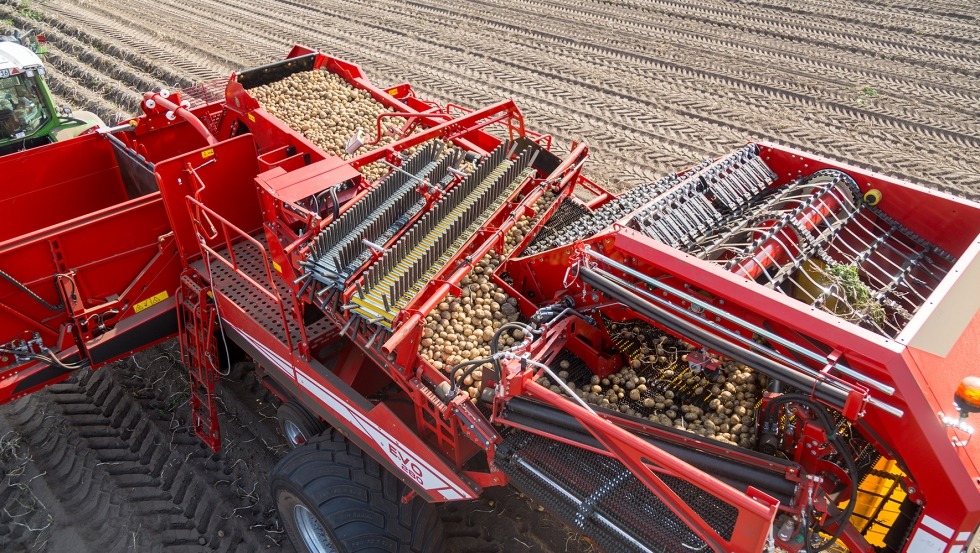
The EVO 280 offers a third ClodSep separator for the best separation in soils with many lumps or EasySep for light soils with a low proportion of waste.
For accurate harvesting of the harvest product, the new pressure regulation on TerraTronic horses is used with integrated starting depth adjustment. With the new technology, the pressure on the desired mackerel and the starting depth can be adjusted easily and accurately and then kept constant completely automatically. In addition, using the optional Speedtronic function, it can be equipped with fully automatic adjustment of all screen tapes and separator units. Also note out are the three large separators that allow high surface yields combined with high product protection. For the first time, you can adjust the angles of the scraper rollers of the first and second hydraulic separators from the terminal.
Several starter units are available for harvesting different crops. The telescopic axle ensures safe road transport with a width of 3 meters, and on the other hand, ensures maximum driving stability in the field, as the axle can be extended by 500 mm.
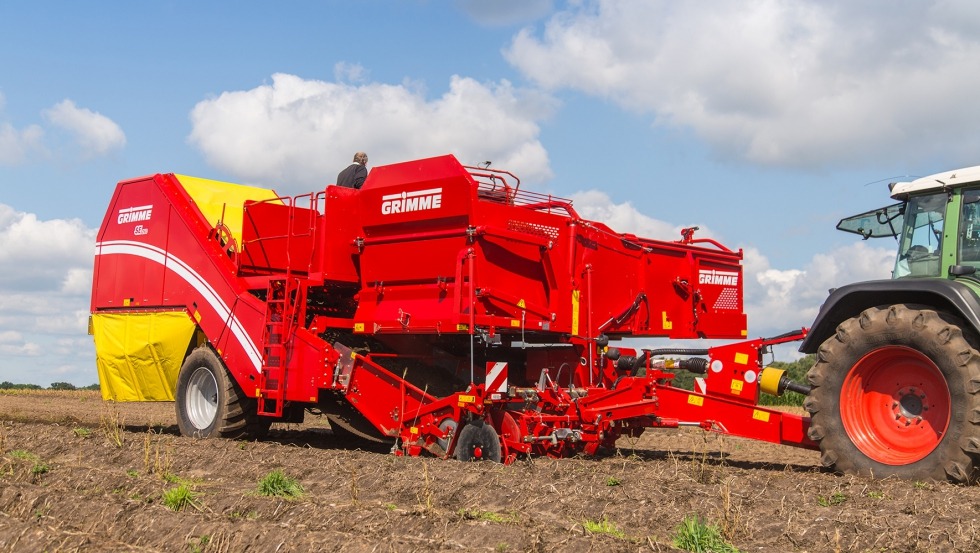
The SE 260 has numerous optional options, such as automatic mackerel center search, automatic horse relief, or continuous adjustment oscillating shaker.Another model that is more accepted in the Spanish market at the moment is the SE 260, a 2-row hopper harvester, side start and hopper with a capacity of 6 tons.
It has an ergonomic rating platform and GBT 817 control terminal on the leaderboard. The first separator with scraper roller for effective work with residual leaf and small lumps, while the second separator (UB) is ideal for areas with many lumps or (NB) for light soils with low waste content.
This manufacturer’s catalogue also includes the EVO 290 model, which has the same options as the EVO 280, but with one less separator. 9-tonne hopper, hydraulic wheel drive and possibility of equipment with AIRSEP separation system.
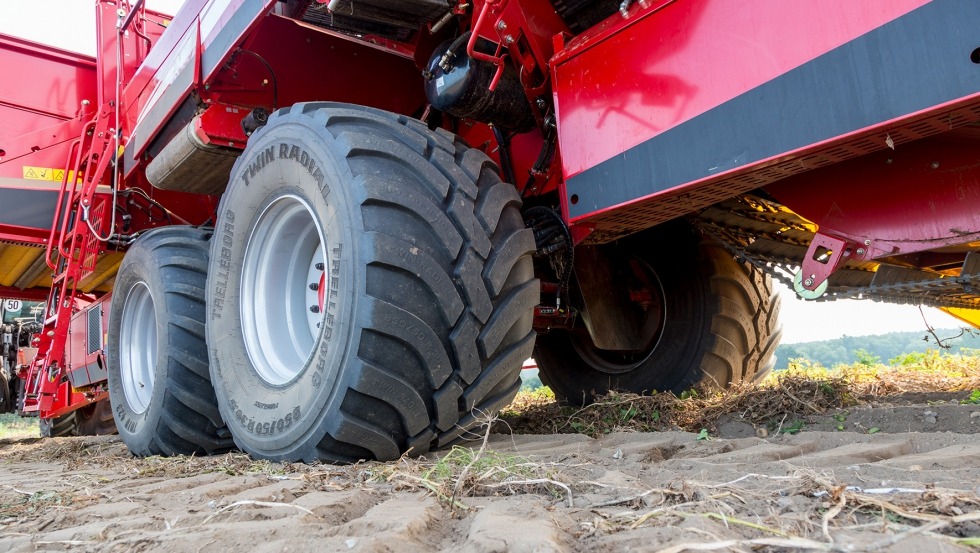
The EVO 290 features the TriSys Translation Mechanism, consisting of 3 wheels (series) up to 65% more contact surface compared to conventional standard harvesters.


